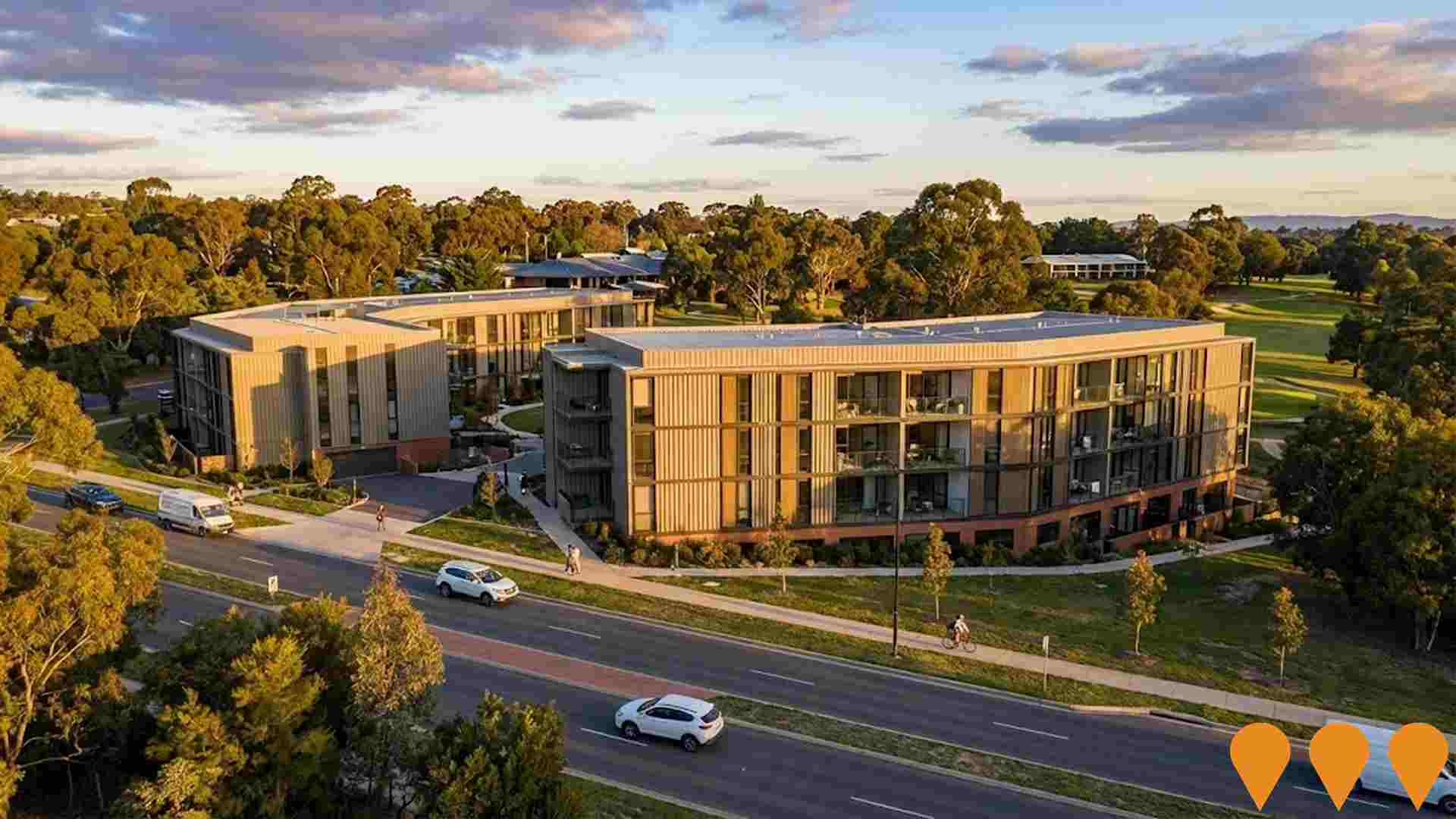Chart Color Schemes
est. as @ -- *
ABS ERP | -- people | --
2021 Census | -- people
Sales Activity
Curious about local property values? Filter the chart to assess the volume and appreciation (including resales) trends and regional comparisons, or scroll to the map below view this information at an individual property level.
Find a Recent Sale
Sales Detail
Population
Spence has shown very soft population growth performance across periods assessed by AreaSearch
As of August 2025, Spence's population is approximately 2,521, a decrease of 66 people from the 2021 Census figure of 2,587. This decline represents a 2.6% change since the Census date. The current population estimate is based on ABS data from June 2024 and validated new addresses since then. This results in a population density of 1,658 persons per square kilometer, higher than the average seen across national locations assessed by AreaSearch. Natural growth contributed approximately 58.8% of overall population gains during recent periods.
AreaSearch uses ABS/Geoscience Australia projections for each SA2 area, released in 2024 with a base year of 2022. For areas not covered and years post-2032, age group growth rates from the ACT Government's SA2 area projections are adopted. According to these projections, Spence's population is expected to decline by 280 persons by 2041. However, specific age cohorts like the 85 and over group are projected to increase, with an anticipated growth of 24 people in this cohort during this period.
Frequently Asked Questions - Population
Development
The level of residential development activity in Spence is very low in comparison to the average area assessed nationally by AreaSearch
Spence has averaged approximately two new dwelling approvals annually over the past five financial years, from FY21 to FY25, with a total of 11 homes approved during this period. There have been zero new dwelling approvals so far in FY26.
The population has declined recently, suggesting that new supply has likely kept pace with demand, providing good choice for buyers. New properties are constructed at an average value of $209,000, which is below regional levels, indicating more accessible housing choices for buyers. Compared to the Australian Capital Territory, Spence shows substantially reduced construction activity, with 85.0% fewer approvals per person than the regional average. This limited new supply generally supports stronger demand and values for established homes in the area, which are also under the national average, suggesting a highly mature market with potential planning limitations. New development consists of 50.0% standalone homes and 50.0% medium to high-density housing, creating more affordable entry points and suiting downsizers, investors, and first-home buyers. This represents a significant change from the current housing mix, which is currently 92.0% houses, reflecting reduced availability of development sites and addressing shifting lifestyle demands and affordability requirements. With around 1690 people per dwelling approval, Spence reflects a highly mature market with stable or declining population projections, suggesting reduced housing demand pressures in the future, benefiting potential buyers.
With population projections showing stability or decline, Spence should see reduced housing demand pressures, benefiting potential buyers.
Frequently Asked Questions - Development
Infrastructure
Spence has emerging levels of nearby infrastructure activity, ranking in the 25thth percentile nationally
Changes to local infrastructure significantly impact an area's performance. AreaSearch has identified one major project that will likely affect this region: Ginninderry Stage 3 - The Valley Release. Other notable projects include Gold Creek Country Club Build-to-Rent (Gold Creek Golf Club Redevelopment) and the New Northside Hospital, which is also part of the North Canberra Hospital Redevelopment.
Professional plan users can use the search below to filter and access additional projects.
INFRASTRUCTURE SEARCH
 Denotes AI-based impression for illustrative purposes only, not to be taken as definitive under any circumstances. Please follow links and conduct other investigations from the project's source for actual imagery. Developers and project owners wishing us to use original imagery please Contact Us and we will do so.
Denotes AI-based impression for illustrative purposes only, not to be taken as definitive under any circumstances. Please follow links and conduct other investigations from the project's source for actual imagery. Developers and project owners wishing us to use original imagery please Contact Us and we will do so.
Frequently Asked Questions - Infrastructure
Low and Mid-Rise Housing Policy
State-wide NSW planning reforms via amendments to the State Environmental Planning Policy to enable more diverse low and mid-rise housing (dual occupancies, terraces, townhouses, manor houses and residential flat buildings up to 6 storeys) in well-located areas within 800 m of selected train, metro and light-rail stations and town centres. Stage 1 (dual occupancies in R2 zones statewide) commenced 1 July 2024. Stage 2 (mid-rise apartments, terraces and dual occupancies near stations) commenced 28 February 2025. Expected to facilitate up to 112,000 additional homes over the next five years.
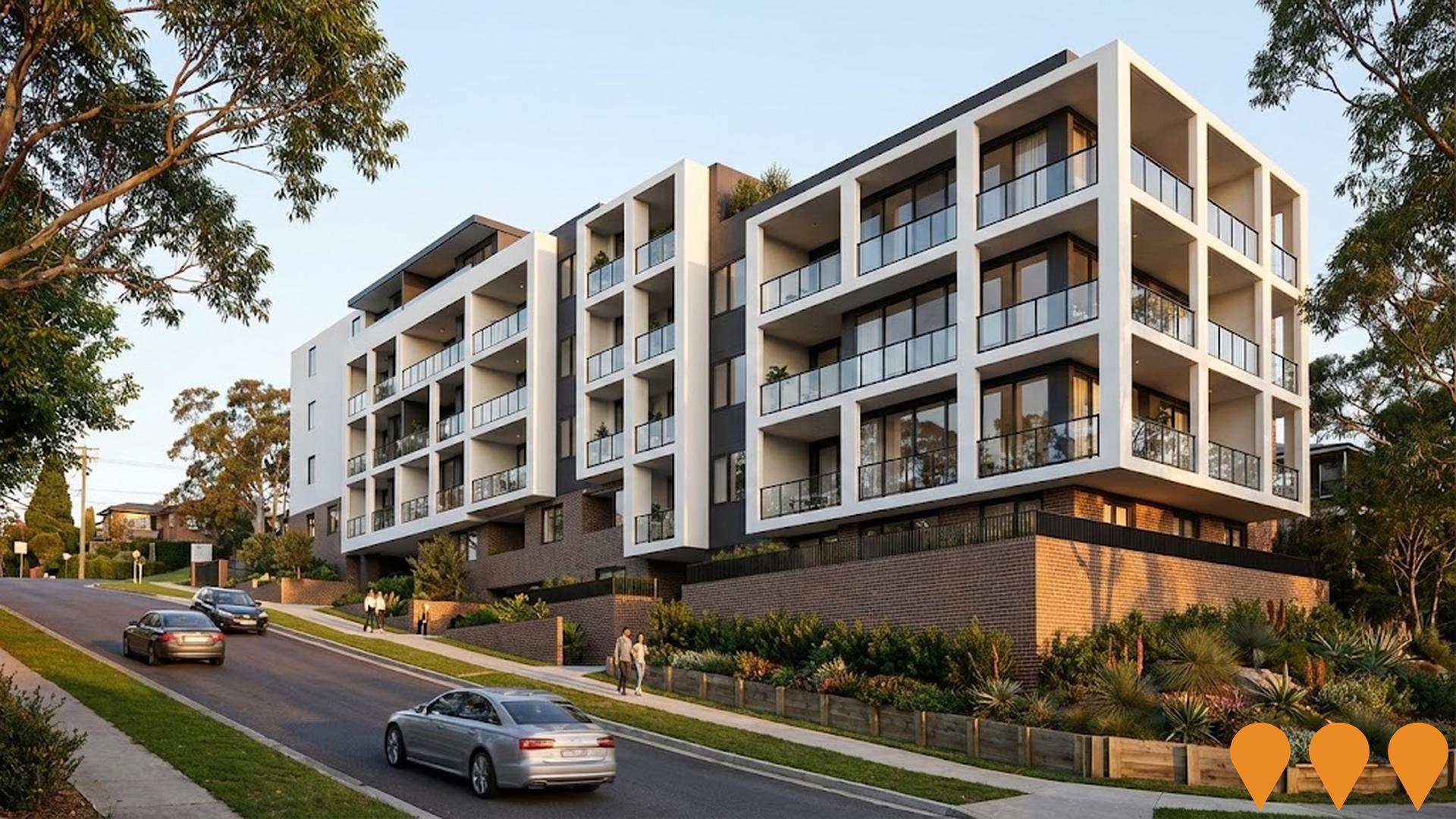
New Northside Hospital (North Canberra Hospital Redevelopment)
Development of a new major tertiary hospital on the existing North Canberra Hospital campus (formerly Calvary Public Hospital). The project involves an investment of over $1 billion to construct a new state-of-the-art clinical services building, expanded emergency department, and modern inpatient facilities to replace aging infrastructure.
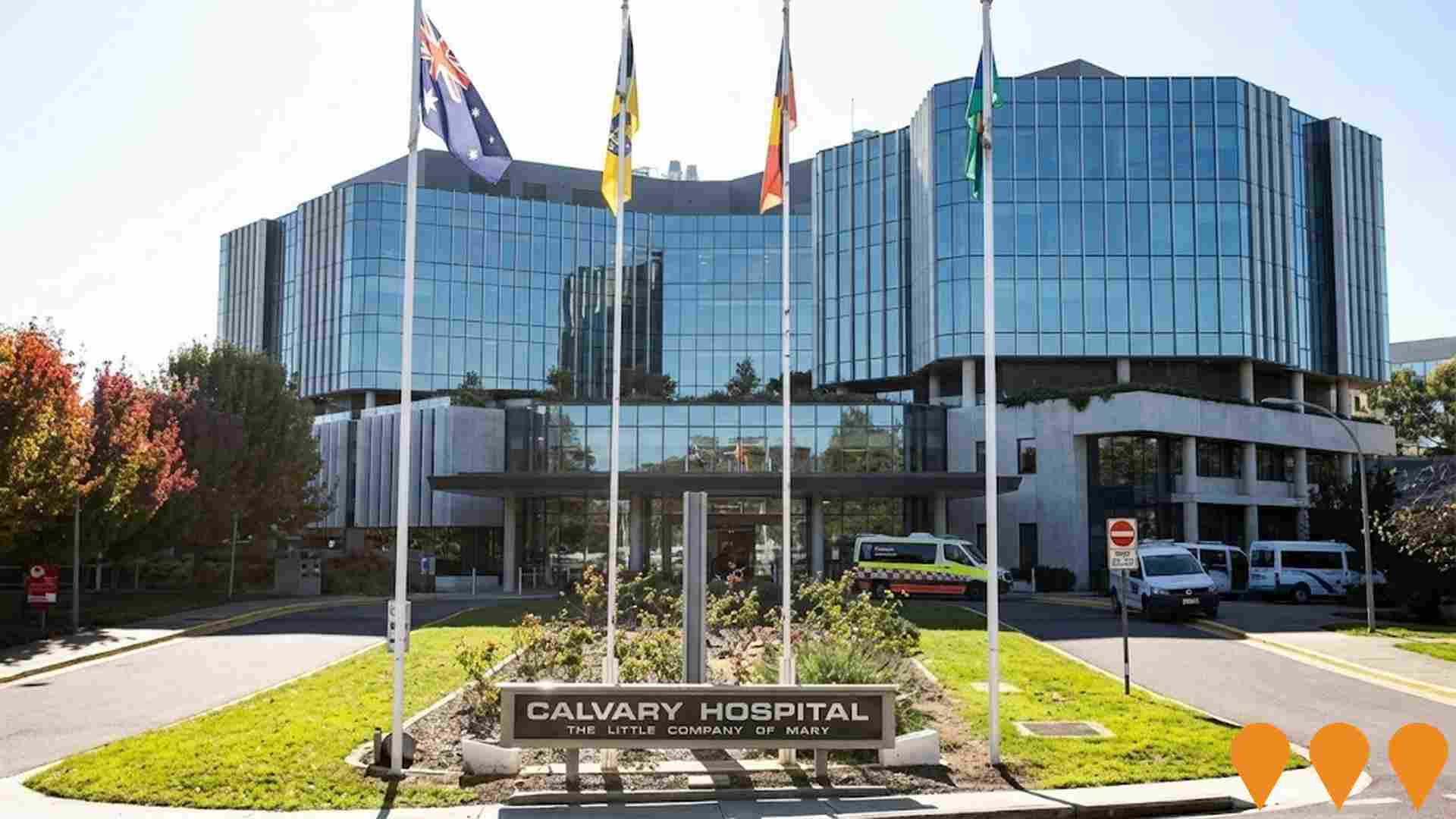
Enhanced bus and light rail corridors (Belconnen & Queanbeyan to Central Canberra)
ACT is progressing an integrated program to enhance high-frequency bus and future light rail corridors that link Belconnen and Queanbeyan with central Canberra. Light Rail Stage 2A (City to Commonwealth Park) commenced construction in early 2025 with services targeted from 2028, while planning and approvals continue for Stage 2B to Woden. The ACT Government has acknowledged and is planning upgrades for the Belconnen-to-City bus corridor as groundwork for a future east-west light rail Stage 3, and is coordinating cross-border public transport initiatives with NSW through the Queanbeyan Region Integrated Transport Plan and the ACT-NSW MoU for Regional Collaboration.
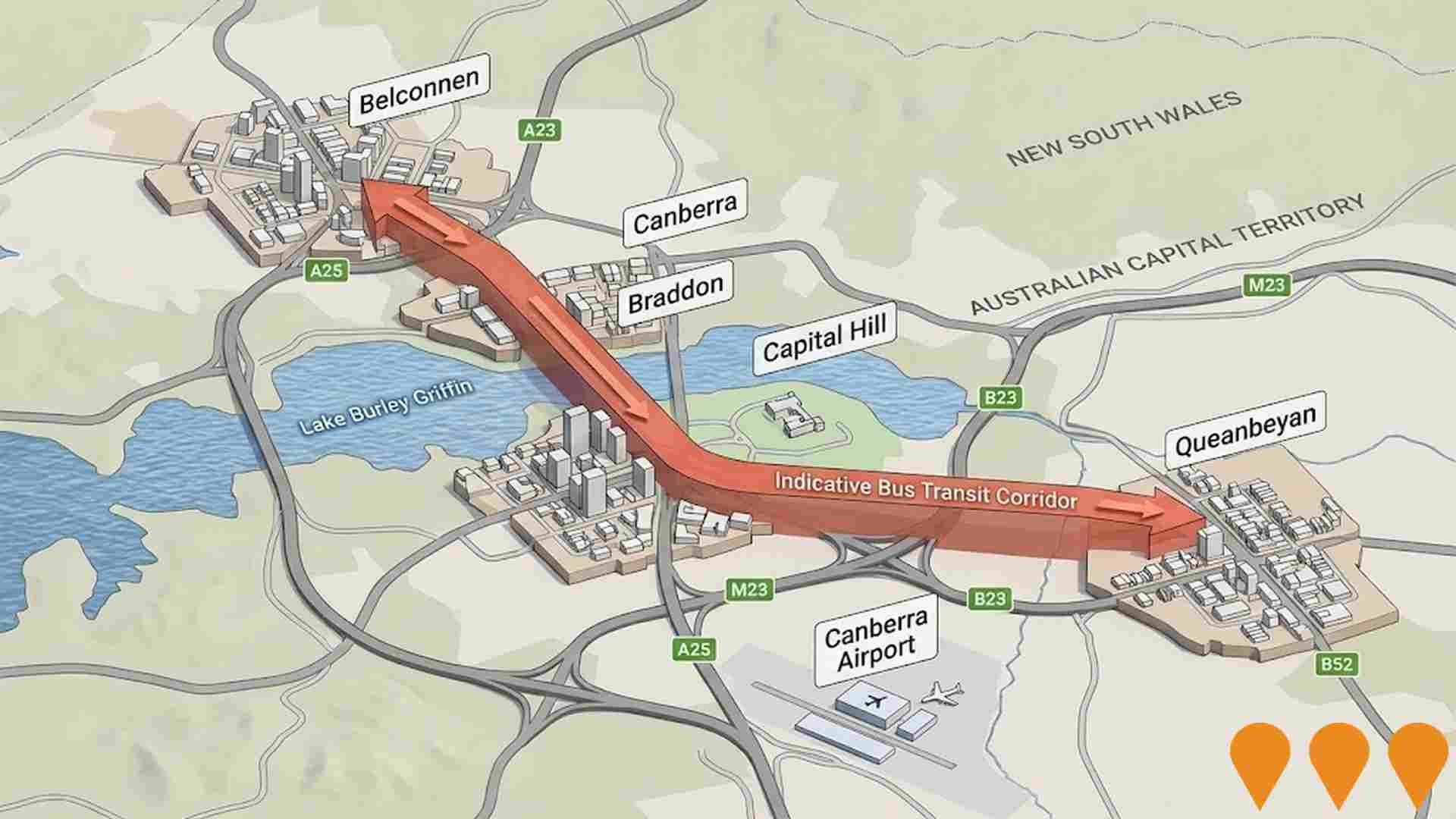
HumeLink
HumeLink is a new 500kV transmission line project connecting Wagga Wagga, Bannaby, and Maragle, spanning approximately 365 km. It includes new or upgraded infrastructure at four locations and aims to enhance the reliability and sustainability of the national electricity grid by increasing the integration of renewable energy sources such as wind and solar.
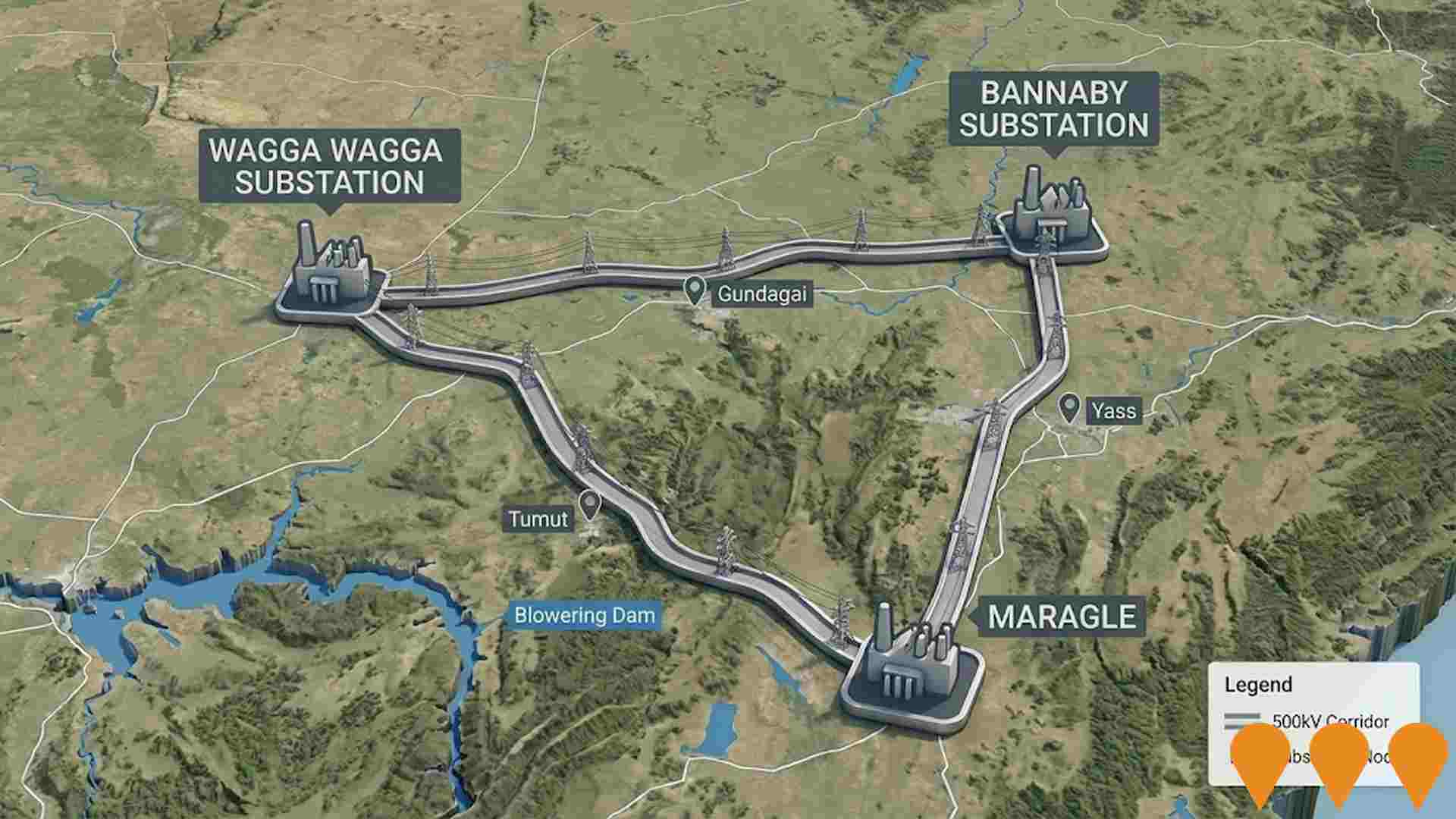
Queanbeyan Regional Integrated Transport Plan
Comprehensive transport planning initiative with 64 key actions for next 10 years. Addresses road safety, active transport connectivity, public transport availability, and future transport needs. Improved connections between Queanbeyan and ACT.
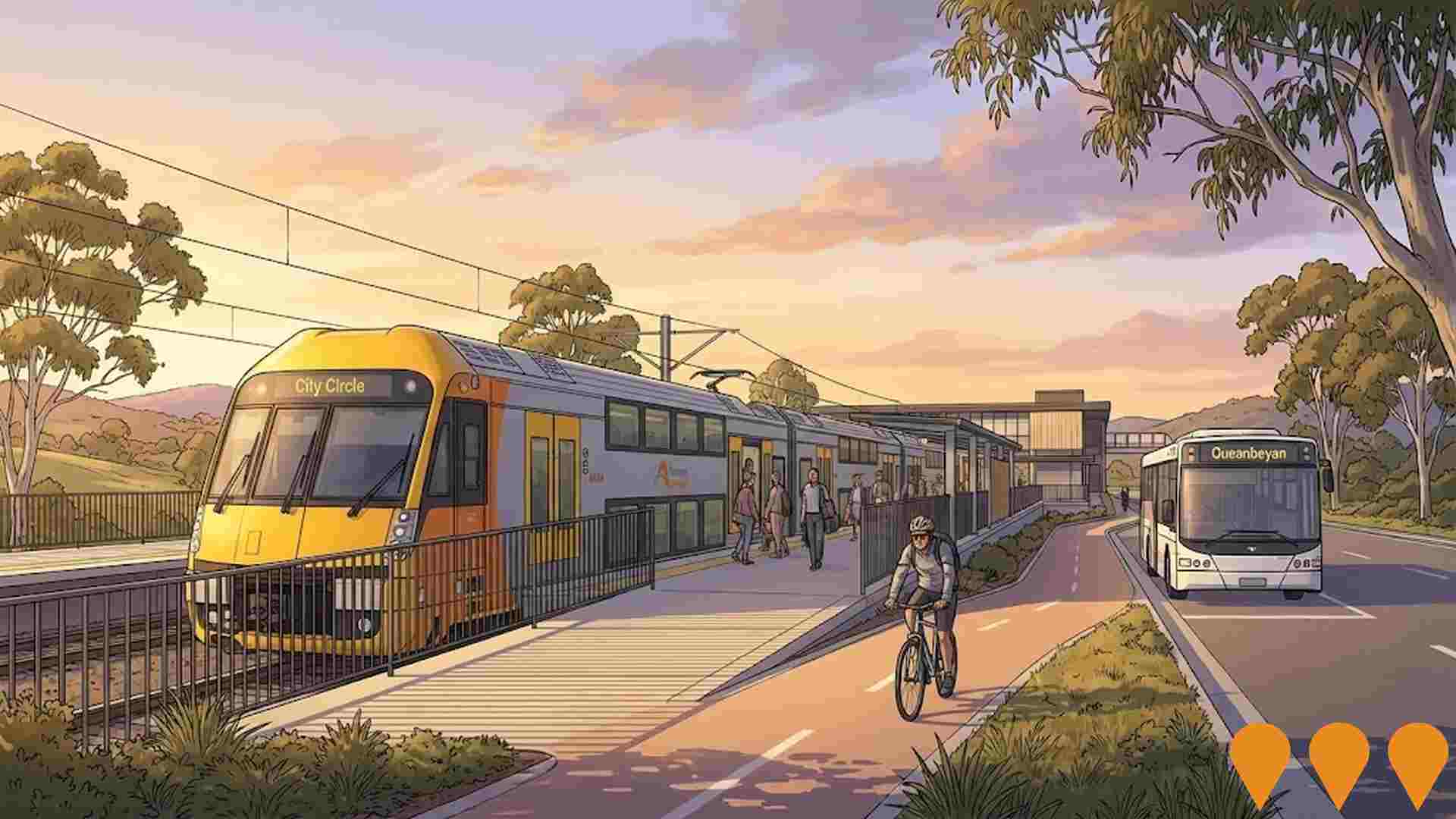
Big Canberra Battery (Williamsdale BESS)
A 250 MW / 500 MWh battery energy storage system at Williamsdale in southern Canberra, delivered by Eku Energy as Stream 1 of the ACT Government's Big Canberra Battery. Construction commenced in November 2024 with partners CPP and Tesla supplying Megapack systems. The asset will connect to Evoenergy's 132 kV network near the Williamsdale substation to provide two hours of dispatchable power, grid services and reliability for the ACT. Target operations in 2026.
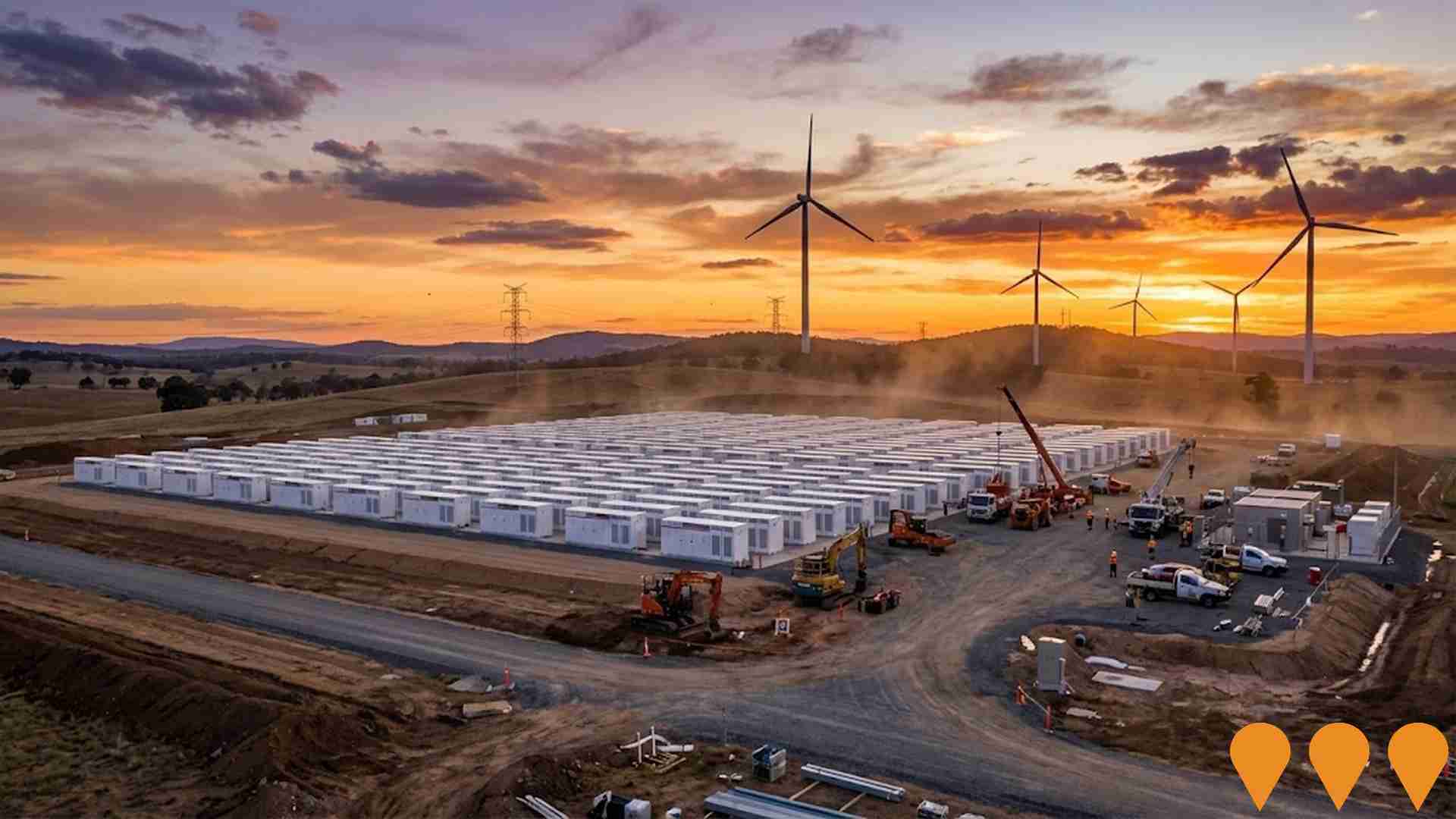
HumeLink East
HumeLink East is Transgrid's eastern package of the HumeLink transmission project. It delivers about 237 km of new 500 kV double-circuit overhead transmission lines from Bannaby to the Wondalga interface point and upgrades the existing 500 kV Bannaby substation. Transgrid has engaged Acciona and Genus in joint venture to design and construct the package. Enabling works began in early 2025, with main construction targeted to commence from mid to late August 2025 pending planning approvals.
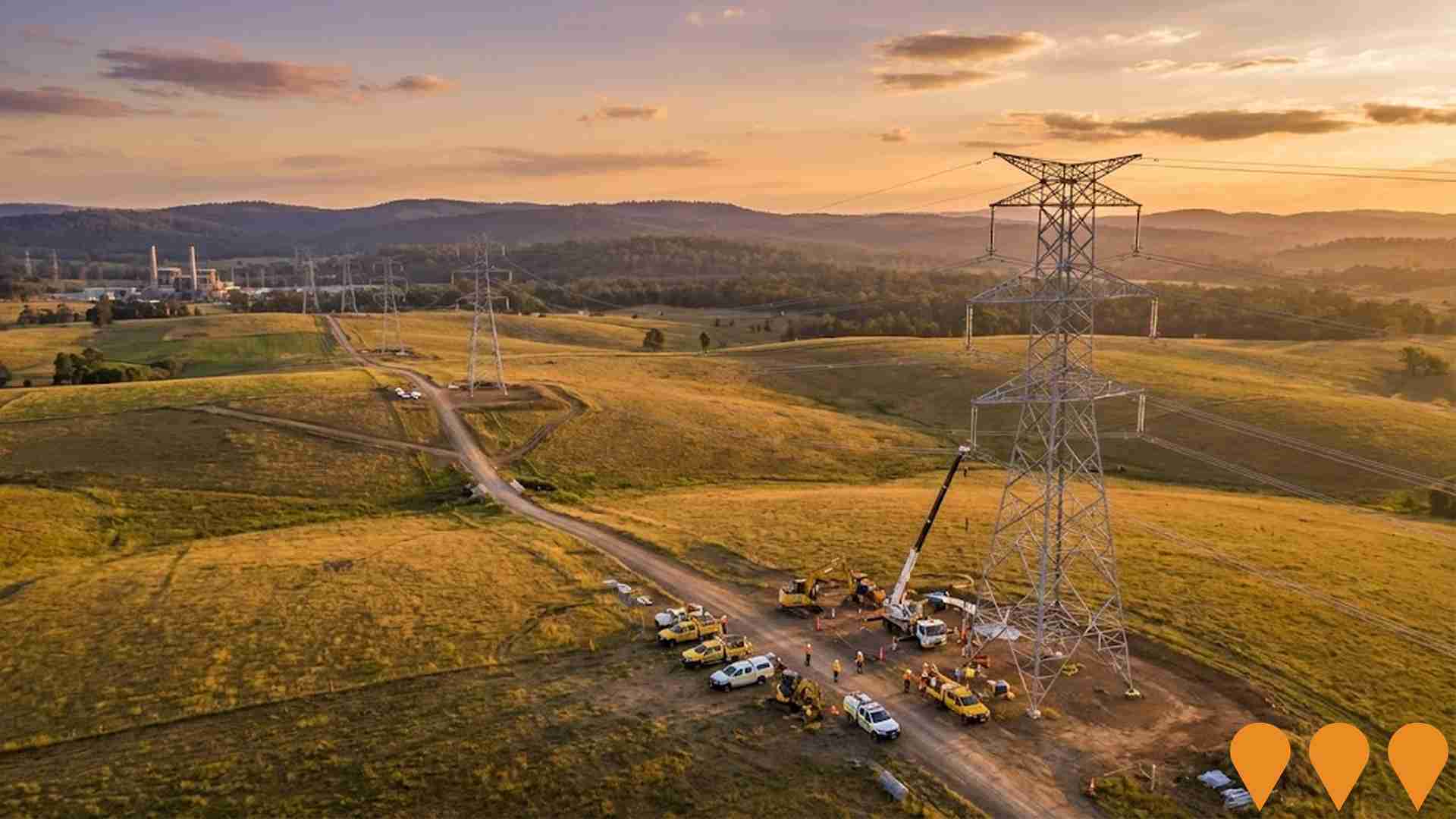
Ginninderry Stage 3 - The Valley Release
Large-scale residential release as part of the cross-border Ginninderry master-planned community, delivering over 500 new homes directly adjacent to western Franklin and Macgregor.

Employment
The employment landscape in Spence shows performance that lags behind national averages across key labour market indicators
Spence's workforce is well-educated with notable representation in essential services sectors. The unemployment rate in Spence was 4.6% as of June 2025, with an estimated employment growth of 3.0% over the previous year.
In comparison to the Australian Capital Territory (ACT), Spence had a higher unemployment rate at 1.2%, and workforce participation was lower at 65.8%. The dominant employment sectors among residents were public administration & safety, health care & social assistance, and education & training. Spence showed particular strength in construction, with an employment share of 1.6 times the regional level. Conversely, public administration & safety had a lower representation at 25.6% compared to the regional average of 30.4%.
The area appeared to offer limited local employment opportunities based on Census data. Between June 2024 and June 2025, employment increased by 3.0%, while labour force grew by 1.6%, leading to a decrease in unemployment rate by 1.3 percentage points. In contrast, ACT saw employment grow by 1.9% and unemployment fall by 0.3 percentage points over the same period. Jobs and Skills Australia's national employment forecasts from May 2025 projected national employment growth of 6.6% over five years and 13.7% over ten years. Applying these projections to Spence's employment mix suggested local growth of approximately 6.5% over five years and 13.3% over ten years, though these are simple extrapolations for illustrative purposes only.
Frequently Asked Questions - Employment
Income
The economic profile demonstrates exceptional strength, placing the area among the top 10% nationally based on comprehensive AreaSearch income analysis
Spence's median income among taxpayers was $66,021 in financial year 2022. The average income stood at $74,628 during the same period. These figures compare to the Australian Capital Territory's median and average incomes of $68,678 and $83,634 respectively. By September 2025, estimated median and average incomes in Spence would be approximately $75,000 and $84,777 based on Wage Price Index growth of 13.6% since financial year 2022. According to the 2021 Census figures, household, family, and personal incomes in Spence rank highly nationally, between the 86th and 87th percentiles. Income distribution data shows that 32.6% of residents (821 people) fall into the $1,500 - $2,999 weekly income bracket. This is consistent with broader trends across the surrounding region, where 34.3% of residents are in the same category. Notably, 36.0% of Spence's residents earn above $3,000 weekly. After housing costs, residents retain 87.2% of their income, indicating strong purchasing power. The area's SEIFA income ranking places it in the 7th decile.
Frequently Asked Questions - Income
Housing
Spence is characterized by a predominantly suburban housing profile, with above-average rates of outright home ownership
As of the latest Census evaluation in Spence, 92.5% of dwellings were houses with the remaining 7.5% comprising semi-detached homes, apartments, and other types. This is notably different from the Australian Capital Territory's distribution of 69.4% houses and 30.5% other dwellings. Home ownership in Spence stood at 33.2%, higher than the ACT average. Mortgaged properties made up 46.1%, with rented dwellings accounting for 20.7%. The median monthly mortgage repayment in Spence was $2,120, surpassing the ACT average of $2,000. Weekly rent median stood at $375 compared to the ACT's $430. Nationally, Spence's mortgage repayments were higher than the Australian average of $1,863, while rents were comparable at $375.
Frequently Asked Questions - Housing
Household Composition
Spence has a typical household mix, with a higher-than-average median household size
Family households represent 75.6% of all households, including 35.6% couples with children, 27.2% couples without children, and 11.0% single parent families. Non-family households account for the remaining 24.4%, with lone person households at 21.1% and group households comprising 2.8% of the total. The median household size is 2.7 people, larger than the Australian Capital Territory average of 2.5.
Frequently Asked Questions - Households
Local Schools & Education
Spence shows strong educational performance, ranking in the upper quartile nationally when assessed across multiple qualification and achievement indicators
The area's university qualification rate is 34.6%, significantly lower than the SA4 region average of 46.8%. This gap presents both a challenge and an opportunity for targeted educational initiatives. Bachelor degrees are the most common at 20.7%, followed by postgraduate qualifications (8.6%) and graduate diplomas (5.3%). Vocational credentials are also prevalent, with 31.8% of residents aged 15+ holding them, including advanced diplomas (11.6%) and certificates (20.2%).
Educational participation is high, with 31.2% of residents currently enrolled in formal education. This includes 10.1% in primary education, 8.6% in secondary education, and 5.6% pursuing tertiary education. Schools appear to be located outside the immediate catchment boundaries, requiring families to access them in neighboring areas.
Frequently Asked Questions - Education
Schools Detail
Nearby Services & Amenities
Transport
Transport servicing is high compared to other areas nationally based on assessment of service frequency, route connectivity and accessibility
Transport analysis shows 27 active transport stops operating in Spence. These stops serve a mix of bus routes, totaling four individual routes. They collectively facilitate 1,232 weekly passenger trips.
Transport accessibility is rated excellent, with residents typically located 150 meters from the nearest stop. Service frequency averages 176 trips per day across all routes, equating to approximately 45 weekly trips per individual stop.
Frequently Asked Questions - Transport
Transport Stops Detail
Health
Health performance in Spence is lower than average with common health conditions somewhat prevalent across both younger and older age cohorts
Spence faces significant health challenges, with common health conditions being somewhat prevalent across both younger and older age cohorts.
The rate of private health cover is very high at approximately 56%, covering about 1,424 people out of the total population. Mental health issues and asthma are the most common medical conditions in the area, impacting 10.9% and 9.4% of residents respectively. However, 63.0% of residents declare themselves completely clear of medical ailments, compared to 68.1% across Australian Capital Territory. The area has 18.2% of residents aged 65 and over (458 people), which is higher than the 15.3% in Australian Capital Territory. Health outcomes among seniors present some challenges, broadly in line with the general population's health profile.
Frequently Asked Questions - Health
Cultural Diversity
Spence ranks below the Australian average when compared to other local markets across a number of language and cultural background related metrics
Spence's population showed low cultural diversity, with 83.3% born in Australia and 93.5% being citizens. English was the language spoken at home by 88.5%. Christianity dominated religiously, comprising 47.5%.
Buddhism was overrepresented at 1.5%, compared to the Australian Capital Territory's 3.0%. Ancestry-wise, Australians made up 28.5%, followed by English (26.7%) and Irish (10.2%). Notably, Scottish ancestry was higher in Spence at 8.9% than regionally at 7.4%. Welsh and Spanish ancestries were also slightly overrepresented at 0.7% and 0.6% respectively.
Frequently Asked Questions - Diversity
Age
Spence's population is slightly younger than the national pattern
Spence's median age is 38 years, which is higher than the Australian Capital Territory average of 35 but equivalent to the Australian median of 38. Compared to the Australian Capital Territory, Spence has a higher concentration of residents aged 75-84 (7.3%) but fewer residents aged 25-34 (10.8%). Between the 2021 Census and the present day, the percentage of Spence's population aged 75 to 84 has increased from 5.1% to 7.3%, while the percentage of those aged 15 to 24 has risen from 12.2% to 14.2%. Conversely, the percentage of residents aged 65 to 74 has declined from 11.6% to 9.4%, and the percentage of those aged 5 to 14 has dropped from 14.0% to 11.9%. By 2041, demographic modeling suggests that Spence's age profile will change significantly. The cohort aged 85 and above is projected to grow by 55%, adding 20 residents to reach a total of 59. Residents aged 65 and above are expected to drive 76% of population growth, highlighting demographic aging trends. However, the cohorts aged 0 to 4 and 25 to 34 are anticipated to experience population declines.
